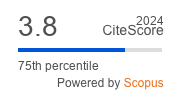Article | Open Access
Understanding the Factors Affecting Traffic Danger for Children: Insights From Focus Group Discussions
| Views: | 2305 | | | Downloads: | 1474 |
Abstract: Children’s safety on urban roads is a critical concern with young pedestrians and cyclists being among the most vulnerable groups to traffic-related dangers. The prioritization of motor vehicle traffic in road infrastructure poses significant risks to child pedestrians and cyclists navigating city streets. Furthermore, children’s independent mobility has been restricted due to traffic danger and their parents’ concerns about it. Given the important implications of this issue, a serious gap was identified in that no measure of traffic danger exists, with outcomes (e.g., collisions) being used as a proxy. Identifying factors contributing to traffic danger, how they interact, and how they impact traffic are imperative to identify where mitigation is needed to address these problems. This article delves into the complexities of traffic risks for children, focusing on intersections and streets. Six focus groups, including experts (n = 3), parents (n = 2), and children aged 8 to 12 (n = 1), were conducted to gather insights on factors impacting traffic danger. Thematic analysis revealed eight key themes, highlighting the importance of addressing traffic volume, speed, vehicle size, road design, driver behavior, visibility, and land use. These findings contribute to a comprehensive framework for understanding traffic danger for children. Additionally, the article examines how stakeholders’ perspectives align with standard measures of traffic danger in the literature.
Keywords: children; focus group; qualitative analysis; traffic danger
Published:
© Shabnam Abdollahi, Owen Waygood, Zahra Tavakoli, Marie-Soleil Cloutier, Irène Abi-Zeid. This is an open access article distributed under the terms of the Creative Commons Attribution 4.0 license (http://creativecommons.org/licenses/by/4.0), which permits any use, distribution, and reproduction of the work without further permission provided the original author(s) and source are credited.


